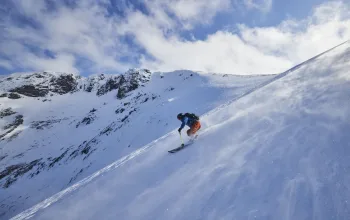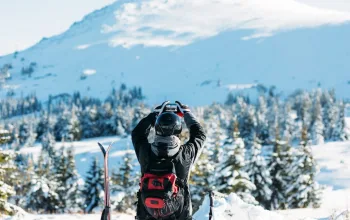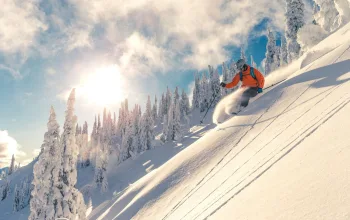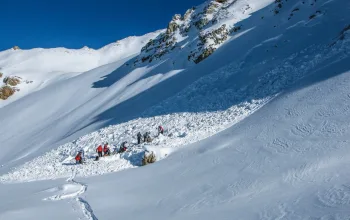Pack your bags
The principle behind avalanche airbags is similar to that of buoyancy. If you get caught in an avalanche you instantly inflate tough airbags attached to your backpack with compressed air. As you get carried down the run-out zone, these bags increase your volume-to-mass ratio and help lift you to the surface. When it all finally comes to a rest, hopefully you’ll be on or near the surface.
Twin benefits
One big advantage of a twin airbag system like ABS’s is it’s designed to keep your body as flat as possible on top of the avalanche. A single airbag – especially one near your head – risks keeping you upright as you fall, increasing your chances of being buried deeper as your legs anchor you. What’s more, by stabilising your body as you fall, decreasing tumbling, twin airbags can reduce injuries. Also, if one gets torn you’ve still got one left!
M.A.S.S appeal
The ABS system at the heart of this Ortovox Freerider 24 avalanche backpack, is a 1,300g Modular Airbag Safety System (M.A.S.S), which has separate twin airbag chambers totalling 170 litres. The versatility of this system is that being modular, this unit can be fitted inside any of Ortovox’s ABS airbag packs, with it only taking a few minutes to switch the unit between bags. This means you can use the system for different trips, as well as take it out and use your pack for other adventures.
Group dynamics
ABS has impressive statistics for the effectiveness of its airbags – of the 262 people whose ABS avalanche airbag was activated, 97% survived and 84% were uninjured. But that said, some 20 per cent of all avalanche victims with airbags did not activate their bags. Often they weren’t quick enough, or couldn’t reach the activation handle. This is where ABS’ Wireless Activation handles come in. These handles can form an ‘activation alliance’ with your group, so that if one of you deploys their airbag, everyone’s airbag activates remotely.
For more information or to purchase this vital piece of safety kit visit abs-airbag.com or
ortovox.com
















